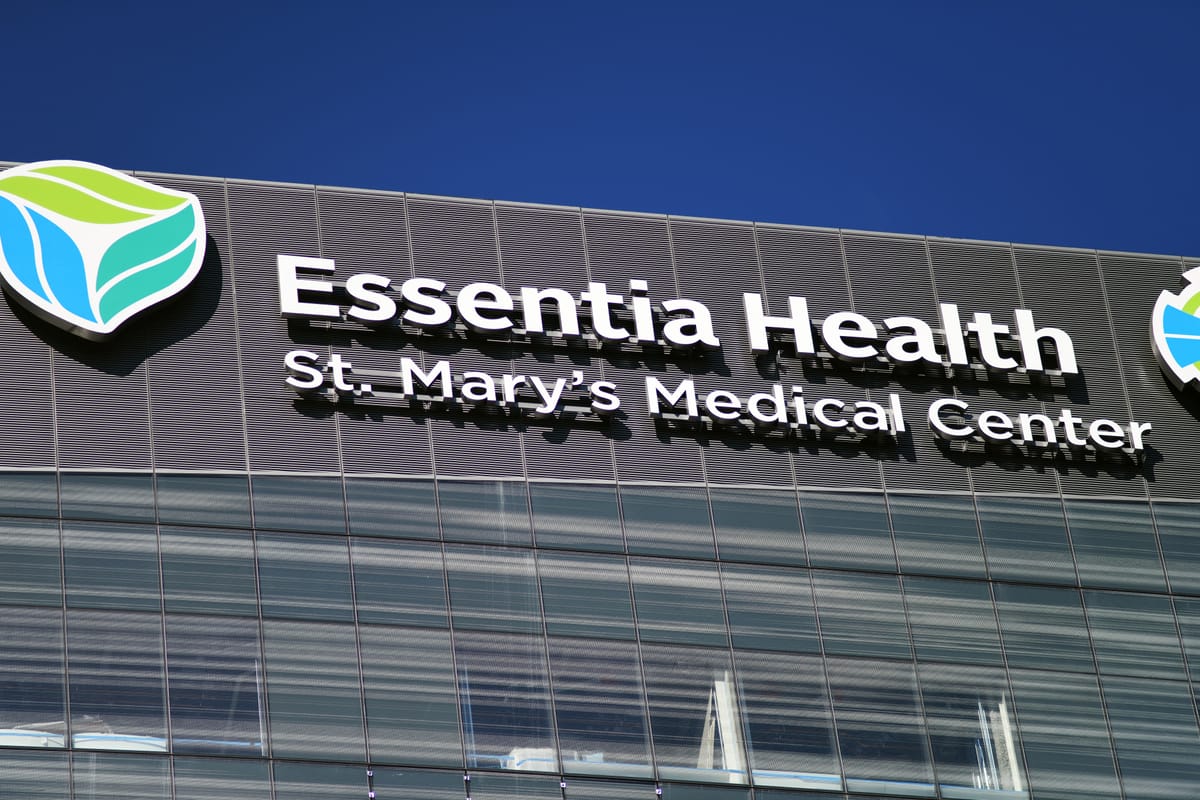Technology at replacement St. Mary’s Medical Center to greatly enhance patient and visitor experience

Essentia Health is utilizing technology to greatly improve the functionality, navigation and patient and visitor experience at the replacement St. Mary’s Medical Center.
Throughout the planning and design phases, we focused on patients and their families and have instituted several state-of-the-art features that will benefit the patients we are privileged to serve, as well as our care teams.
A patient education and entertainment system is included in each private patient room. This provides a hotel-like experience with more than 100 new-release movies and TV shows, 50 channels of live television, the ability to stream concerts and worship services from our chapel and options to cast from your smartphone. These systems will keep patients connected and entertained while in the hospital. They also will allow patients to order food, view members of their care team and request assistance.
Enhanced surgery notifications will help visitors keep track of loved ones while they undergo a procedure. This is a text-based system that sends notifications to family and friends, updating them on every significant step of the patient’s procedure from pre-op to post-op.
Digital wayfinding will make it easier than ever before to get around our downtown Duluth campus. When patients enter the hospital, they will find a wayfinding kiosk. With the help of an app, patients and visitors can navigate the hospital and be provided with step-by-step instructions on how to get to their destination. This kiosk will also show instructions for those that don’t want to use the app. Additionally, there are several two-way video intercoms on each floor of the hospital. These allow people to talk to a real person if they need directions.
Elevators throughout this transformational facility will make patient transport easier and quicker. Instead of the traditional “up or down” options found at most elevators, our public elevators are more intuitive. Each elevator bank has a tablet that asks you to select a floor. It then schedules an elevator that will get you to that floor in the most efficient manner. For example, if you were on floor six and wanted to go to floor 11, and there were two available elevators but one would make multiple stops and the other was going straight to floor 11, you would be placed on the second elevator. Further, we will have the ability to commandeer an elevator so it can be used only by staff in special situations, such as during emergencies to expedite patient care.
All of our refrigerators that store temperature-controlled items like vaccines will be equipped with an advanced temperature and humidity tracking system to ensure they are kept within a specified climate needed to remain viable. This system automatically and continuously monitors the temperature and humidity in our refrigerators and uploads them to an online database so we can continually assess and ensure our products are within a safe range for patient use. The system has built-in processes for sending notifications if temperatures go outside of a specific range.
A pneumatic tube system — similar to what you encounter at a bank drive-through — will greatly improve the transport of smaller items in the hospital. This system can move objects conveniently and quickly, as fast as 15 MPH. The replacement St. Mary’s Medical Center will incorporate about 12,000 feet of pneumatic tubes, with the capability to connect to existing systems in other buildings on our downtown campus.
Key advancements with the new system include radio-frequency identification (RFID) tracking. By using employee badges to log into the system, RFID allows for secure transfers of blood, tissue and medicines that require chain-of-custody documentation. With more than 4,000 transactions every day, the Vision Northland pneumatic tube system promises to efficiently support clinical teams so they can focus on providing the best patient care possible.
Equipment in our operating rooms simplifies the complexities of a modern operating room while providing functionality that supports safety, efficiency and positive clinical outcomes. This includes cameras and intercoms built right into the equipment that allows physicians to bring a colleague into a procedure virtually to provide feedback and answer questions should an unknown arise.
The hospital will have dozens of other features that enhance the patient experience, reduce our carbon footprint and make it one of the most state-of-the-art facilities in the region. Our first patient day at the replacement St. Mary’s Medical Center is expected to occur in the third quarter of this year.
Comments ()